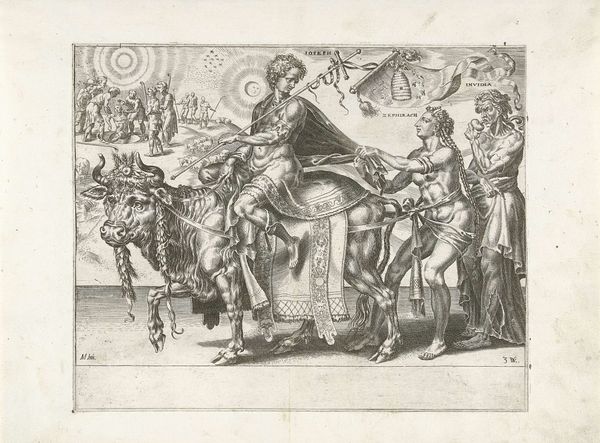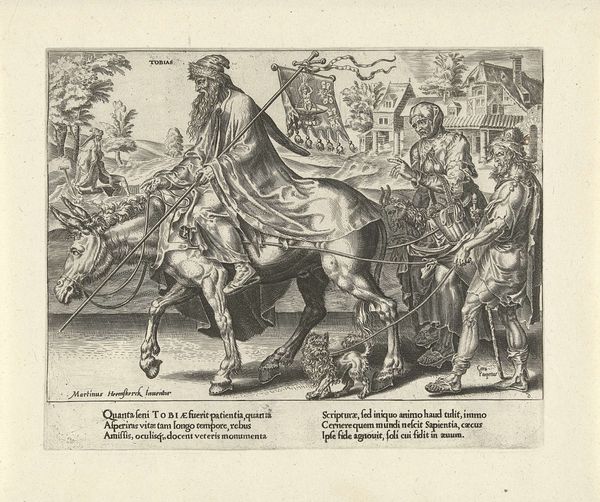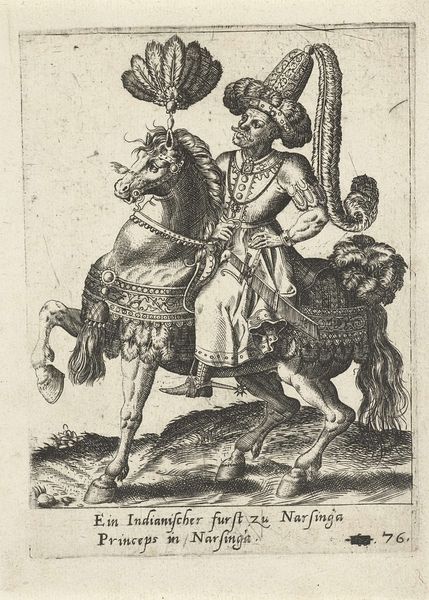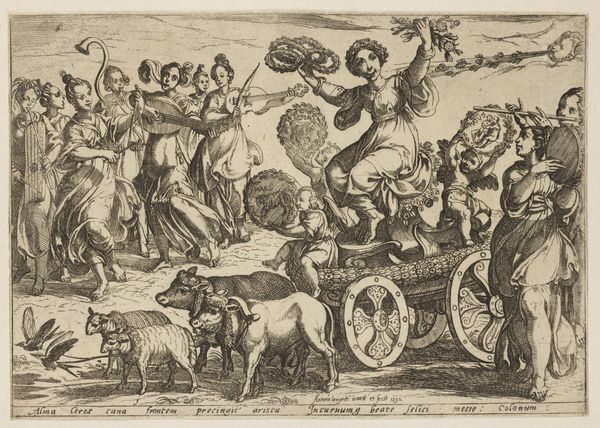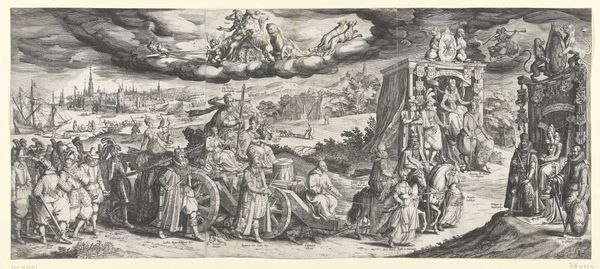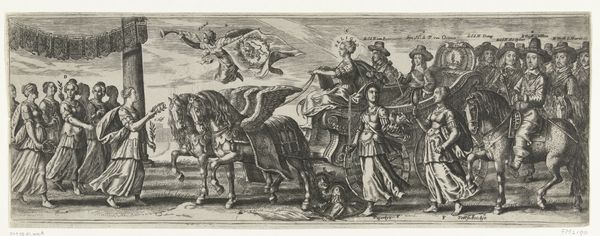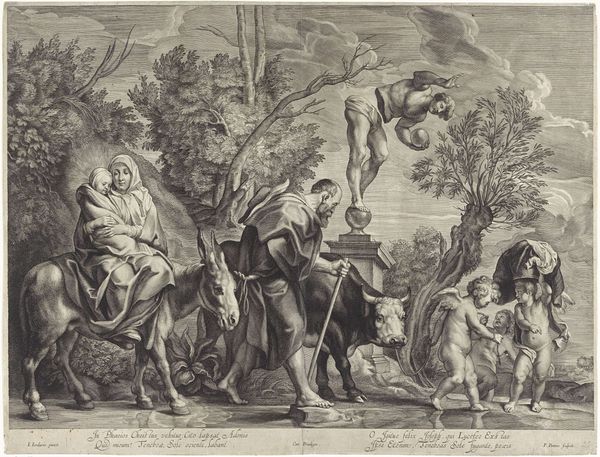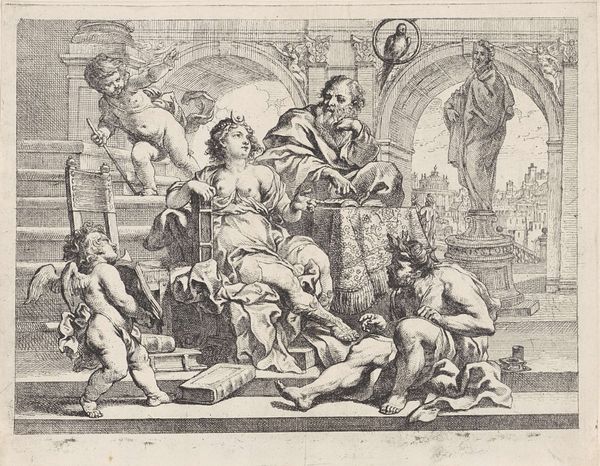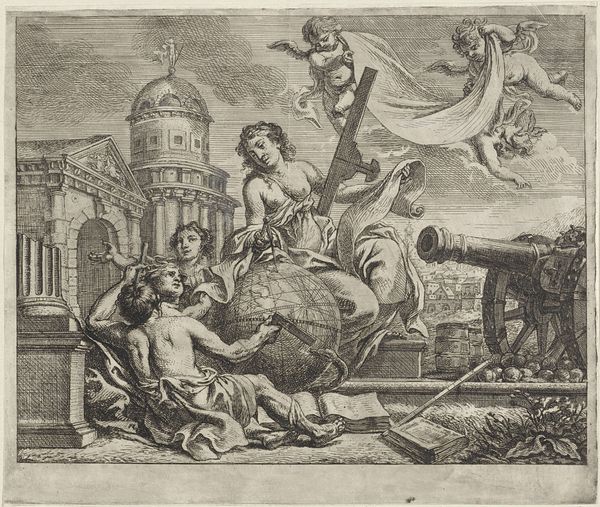
print, engraving
#
narrative-art
# print
#
old engraving style
#
mannerism
#
history-painting
#
engraving
Dimensions: height 207 mm, width 260 mm
Copyright: Rijks Museum: Open Domain
Curator: Dirck Volckertsz Coornhert’s “Triumph of Isaac,” made in 1559, presents a dense layering of symbols. What's your initial take? Editor: Claustrophobic. Look at how compressed everything is in the picture plane; and it seems even the landscape in the back has little to no atmosphere and definition, everything is compressed within very hard and bold outlines. It’s visually busy. Curator: Exactly! The compressed space heightens the symbolism. Isaac is presented as a triumphant hero, riding a camel festooned with ornaments. A camel as transport has obvious cultural associations, but his adornments hint at the prosperity that awaited him in life. Editor: His clothing, though! Those angular pleats and bizarre padded shoulders and arms – it’s far more stylised than anything practically wearable, suggesting the dominance of mannerism, and an attempt at drama rather than historical accuracy. The figure looks a bit stiff for a triumphal return! Curator: I see it differently. His very stiffness reflects the monumental role he fulfilled in the divine plan. His story symbolizes obedience and the covenant with God, renewed with each generation. The background details offer subtle nods, a town in the distant plain, other travelers arriving in the lower corner. Editor: Are those putti? In the upper right, a couple of winged babies are present with what appears to be Abraham and an altar with sacrifice? Curator: Precisely. The angel stops Abraham, recalling the averted sacrifice, a reminder of the ultimate sacrifice fulfilled in later traditions. Behind Isaac the smoke also evokes the offerings performed in thanks for salvation, doesn't it? Editor: The light and shadow is also interesting, note how light defines the figure but flattens it, drawing attention away from depth and atmosphere towards hard and clearly defined outlines. Curator: These precise, etched lines create symbolic clarity. Isaac's figure and narrative are framed by these aesthetic choices, aren’t they? This print underscores how triumph and remembrance go hand-in-hand. Editor: It does; perhaps it isn’t about an actual victory then. Thinking about it, the Triumph lies in Isaac’s perceived role as a vessel in the grand religious scheme. He almost embodies an emblem instead of embodying action.
Comments
No comments
Be the first to comment and join the conversation on the ultimate creative platform.
